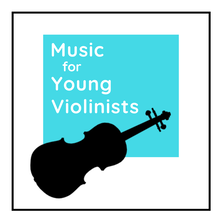|
After spending decades teaching and hours every day watching how the body's posture impacts the instrument's sound, I can not stress enough that the body is the first instrument. One of the most common problems is too much activation in the shoulders. Learn 3 innovative ways to train and teach the release of muscles in the shoulders in this blog post below. When we play the violin, both shoulders tend to tighten up and cause negative issues in our playing. Here are 3 tips to help violinists gain awareness in their shoulders and keep their violin playing healthy. 1- PRACTICE LAYING DOWN This is silly and awkward BUT highly effective. The laws of gravity will help a violinist feel a naturally aligned state in their body when they play laying down. Laying down while playing the violin is an incredible tool for the following three techniques: 1-Teaching the neck to release tension. 2- Supporting the shoulders in finding the base of their sockets. 3- Getting the knees to soften up. Young children love this because it feels like a novelty, however, this practice technique is appropriate for players of all ages and levels. Laying down while playing the violin will create a very unnatural feeling in the bow arm and compromise the sound, but the long-term results of alignment and awareness are more than worth the short-term compromises. 2- TIGHTEN UP: Go to the extreme to build awareness. Tighten up the shoulders as much as possible for 5 seconds and release. I use this verbal cue: "put your shoulders in your ears." After this intense use of muscles, the shoulders will respond with fatigue and rest by staying down in the bottom of their sockets. They may not always stay down for the rest of the lesson or practice session, but this exercise helps develop the necessary awareness to address tight shoulders and fix this problem in violin playing. In addition to creating muscle fatigue and natural inclination to release, this tip will also help a violinist realize the extreme of their range of motion so that they have more control in choosing where their shoulders go when playing. 3- EVALUATE THE CHIN REST AND SHOULDER PAD SET-UP: When was the last time you changed your *chin rest or shoulder pad? Young students with growing bodies have different proportions in their neck-shoulder-arms approximately every six months and, their playing needs are also growing. Chin rests and shoulder pads need to be re-evaluated for younger players on a regular basis because of this continual physical and musical growth. Most of us do not live in a major metropolitan area with a large string supply store to experiment with a variety of gear for our violins. Instead of this, stay up to date and informed of the variety of chin rests and shoulder pads by subscribing to string catalogs (links below). Also, consider the Poly-Pad which I have featured on the “Things I Love” page. This economical shoulder sponge has extra curves than competitors pads and is one of my favorites. When I moved to Oregon 15 years ago I purchased a Poly-Pad in each size and it really helped me individually fit all of my students. Interested in more tips for playing the violin? Below are 3 M4YV tutorial videos on vibrato, pizzicato and bow hold "bunny flips" that share ideas to help you bring out the best in your music making!
How do you help your student keep their shoulders relaxed when they play the violin?
0 Comments
Violin playing is a dynamic and complex learning process that can be cumbersome when the syntax is not built upon existing concepts. Learn 3 misnomers in violin teaching and how to upgrade your languaging for better results. Down Bows & Up Bows: Since the bow moves in lateral directions, left and right, the actual words "up" and "down" do not correlate with the motions and can confuse both young violinists and their parents during home practice. For violin players having difficulty integrating the words "down" and "up" into their playing, consider substituting the words "open" for down bows and "close" for up bows. Open refers to the arm opening up straight for what is termed the down bow, and close refers to abducting the forearm in what is termed an up bow. The Chinrest: I always told my students that if I could go back in time, I would change the term "chinrest" to "jawrest" since it's a misnomer. In reality, the chin is not involved in violin placement, and it is the jaw that contacts the face of the violin. This terminology has befuddled more than one student in my career, and they tried defeatedly to place their chin there. It is useful to point out this discrepancy so that the violin posture is not inadvertently misinterpreted during home practice. Learn about my favorite type of "chinrest" HERE. High and Low Fingers: Words like "high" & "low" are confusing to beginning violin students while still learning how to play the instrument because these words are associated literally and do not yet connect with pitch vibrations. Consider altering your instruction to be a description location like "closer to the bridge (or nose)" and "closer to the scroll" instead for more efficient results in the initial stages of learning these distinctions. Learn a neat trick for teaching "low" 1st fingers HERE. Have a languaging teaching tip?
Please share in the comments below. Warm-Up Routines for Violin (tutorial video & PDF chart) uses a simple but powerful open string exercise to learn 13 different technical exercises for beginning, intermediate, and advanced level violin. This resource is for both teachers and students. Teachers can use this to help create a framework of goals to help their students advance the quality of their music-making while developing technique and tone production. This resource is also designed for students to identify what level they are at and take responsibility for ensuring they accomplish the expectations that should be studied at that level. By the end of this tutorial you will learn: 1- Why it is so important to do this warm-up, holding on to the edge of the violin even if you are no longer a beginner. 2- Another reason why every violin teacher should purchase a roll of painter's tape (seriously, this stuff has no end of useful purposes & you will thank me later). 3- A weird but super cool way to use the violin to play the bow (yep, that's not a typo, you read that correctly). Watch the tutorial video below and download the free accompanying PDF chart on the M4YY FREEBIES page. Learn more about the "Violin Teaching Supplies - From a Hardware Store" video referenced in the Warm-Up Routines for Violin tutorial below. Learn more about the "Tiger Paws & Table Corners" technicals also referenced in the Warm-Up Routines for Violin video below. In the arena of heated conversations among string teachers, the subject of finger #s (i.e., 1, 2, 3) versus pitches (B, C#, D) is a hot topic. I was surprised to read the comments on the blog post Best Way to Learn Violin Notes? and did not expect the consistency of responses. My favorite part was learning how the different countries approach this. Click HERE to read what others are saying about finger #'s vs. pitches. The pros of using finger numbers are that they are simple and clear. They also can segue nicely into using finger patterns. I am a proponent of teaching finger patterns even if using pitches over finger #s is the preference since they help train the whole and half steps while strengthening the mind-body circuitry. Since the finger patterns correlate nicely with the tapes on the violin fingerboard, it is easy to integrate them into the curriculum, especially at a beginning level. Another pro of using #'s is to benefit students with special learning needs. These students (i.e., dyslexic, or right-brain dominant learners), have minds that best connect with a # over a letter. The pros of using the letter name of the note segue into a broader understanding of key signatures. This leads to understanding music theory, and ultimately teaches the universal language of music. I spent most of my teaching career using finger #s and have to wonder: Was my reluctance to embrace using pitch names a reflection of my struggles with music theory? I digress but bring this up since many of us had either very limited or unsuccessful music theory training. It was not until I was age 25 and did teacher training and teaching using the Music Mind Games music theory curriculum that I began to understand music theory. I recently discovered the Fantastic Finger Guides. I think they are fantastic- they offer a quick and economical solution to accurate finger placement and immediately help to code the language of music theory into the beginning level violinist. In 8 seconds, I applied the Fantastic Finger Guide. It went on smoothly and would be doable for students to apply independently. Now, a clear map of pitches appears on my fingerboard as well as easy to see finger numbers identified on the side of the neck (perfect to see from "rest position"). The product comes on a beginning version (with less information as not to overwhelm the beginning student) and an advanced version that includes more pitches and a quick visual guide for how sharps and flats work. Receive 10% off the Fantastic Finger Guides thru July 31, 2020 with coupon code MFYV2020.
Click HERE to learn more and order the Fantastic Finger Guides. Giveaway Contest - Win the Fantastic Finger Guides!!! Entering is easy, scroll down to learn how. After almost a decade of teaching, Toby Weston, educator & creator of the Fantastic Finger Guides asked himself: Why do we use finger tapes when first learning to play string instruments such as the violin, viola, or cello? Is there a better way than finger tapes to get our beginners playing correctly with musical confidence? Learn more about why using pitches instead of finger numbers is empowering to the learning process below by guest blog post author Toby Weston.  I have learned from teaching middle school music for the past 12 years that the best way to improve student learning is to improve the teaching system. I wondered if there was a better way to teach than with finger tapes because finger tapes don't provide sufficient musical information to help the student grow musically smarter and they are a very abstract teaching tool. I was concerned that by using finger tapes, my students were labeling the sound only by its physical location and not coding the actual musical language. At one point I used different color tapes for different locations: 1st finger was red, 2nd finger was white, and the 3rd finger was blue. After a year of playing, most students using this system will code the location as 1st finger on the red tape on the A string, but not code the letter name nor musical language. By the time these students reached the 7th grade, many had deficiencies in understanding their fingerboard in terms of a musical alphabet. After years of using finger tapes I had a breakthrough in the Fall of 2017: Why don't we just put the letter names on the instrument? This way the student has the information needed to move forward in the music. When a student practices on their own they build correct muscle memory for spacing and also musical alphabet memory. This leads to gaining confidence in their playing without their teacher present. The student can code the music alphabet as their primary thinking versus finger tapes that are too abstract and don't provide any musical information. I ended up creating the Fantastic Finger Guides to solve this problem for my students. I created the D Major Beginner Guide for my first-year students and the All Notes guide for my second-year students. When students are beginning to learn the violin, less is better thus the rationale for a more simplified finger guide. Receive 10% off the Fantastic Finger Guides thru July 31, 2020 with coupon code MFYV2020. Click HERE to order the Fantastic Finger Guides. How To Enter the Fantastic Finger Guide Giveaway Contest:
Calendars, Goals & the BIG Secret About Our Teaching Learn how to teach goal setting and organization to your violin students by using a calendar and working backward. Not a teacher? Not a problem, this is still great content for students and parents to help you streamline your goals and clarify your focus. You will find it especially useful if you are preparing for a performance. Plus, I also share what I think is the big secret about the work we do as violin teachers: We are not just teaching the violin... We are not just teaching music... We are teaching our students life - how to live a life with purpose and for how to navigate and process the complexities of the human experience. That is the “Big Secret” alluded to in the title and more specifically that by teaching our students to have success with their violin skills and musical expression we are sharing with them a template for how to have success in other areas of their life as well. One way we can do this is to set goals and use a calendar to create a plan for how to turn these goals into a reality. Goals are like GPS coordinates for your dreams. All of my advanced and older students get a hard copy of a 9-month calendar at the beginning of the school year and we sit down together and write in all of the performances, dress rehearsals, group classes and auditions. Then, we work backward from this structure to plan for our musical goals to best prepare for them and have success. For my younger or less advanced students, I give them a 3-month calendar in the months preceding our solo recital and do a shorter version of the planning mentioned above. In short, we are using music and the violin to teach our young students how to make their dreams come true and we need to offer them concrete tools in this process. Hardcopies of calendars that are organized by the teacher and student together help both parties clarify goals and create a structure for achieving success in these desired outcomes. To see a demonstration in more detail of how to use a calendar to support your violin goals please view the video below. This blog post contains a compilation of links to all 7 blog posts and videos in this series 7 Steps to Attract More Students & Grow Your Violin Studio (What I Wish I Knew When I Started My Studio 10 Years Ago). Ideas presented in this series are excellent for both new teachers just beginning to grow a music studio and seasoned instructors who desire to maintain their success.  I am interested in your feedback about music & money.
Please take a 3 question survey to help me know how to better serve you. This is part 1 of 7 from the blog and video series 7 Steps to Attract More Students and Grow Your Violin Studio (What I Wish I Knew When I Started My Studio 10 Years Ago). The entire series is available as a download in the Music for Young Violinist store. STEP 1/7: ESTABLISH YOUR FOUNDATIONAL MINDSET“How do I get more students?” So many teachers email me this question that it was time to share my private responses with a greater community. The culmination of information in 7 Steps to Attract More Students & Grow Your Violin Studio is the result of my trials and errors building a violin studio these past 10 years. The subtitle is sincere in it’s statement of - What I Wish I Knew Before Starting My Studio 10 Years Ago. This resource is for both teachers who are growing their teaching studios and for established teachers who want to maintain their success. All underlined text are active web links you can click on for references. Before diving into the 7 steps that will help you reach your goal of obtaining more students and booking your teaching studio to capacity, there are 2 things to share with you first. 1- Watch the complement video series on the Music for Young Violinists YouTube channel. This series builds on the ideas presented here and adds in more background. Also, we learn through different sensory channels. These words are a written channel that you can read at your own pace, print and write on it. Watching the YouTube series you will hear the information along with seeing the body language I display and pick up more ideas by utilizing both learning streams. 2- This series will address both the inner process and the outer process of attracting more students and growing your studio because I believe in the life philosophy that “an eagle flies with 2 wings.” For something to “fly” (or be successful) it must be balanced equally with hard and soft skills. Hard skills are the doing part - getting a website, optimizing your search engine results, making a Welcome Packet and etc. Soft skills are organizing values, studio mission and identity. Your success will rely on you placing priority on both the hard and soft skills presented here. Why is your success important to me? My hope is that this information helps you to grow your studio so that your career is financially sustainable for you and your family and that this allows your gifts to be fully of service to your community. Also, I believe that beauty connects us to truth. Music and the learning process attached to it are beautiful. We are all searching for a higher truth to make sense of this intricate world and music plays an integral role in connecting us to this truth. Building your studio may push you outside of your comfort zone, but, isn’t this wonderful? You get to model for your new students what it means to be vulnerable, try new things and push yourself. Treasure the growth that will come with this process and use it to be an even better teacher! Along with calibrating your mindset to get excited about breaking out of your comfort zone you are invited to celebrate every success! Dream big and go for it 100% but realize you can only control your attitude and your effort and not the outcome. Let any disappointments run their course and maintain your commitment to celebrate every success. In this series you will learn how to identify as a small business owner and develop a personal statement that powers you forward in your actions. These will be energizing experiences but are not guarantees of having your studio fill up overnight. Forging your commitment to celebrating every success will ensure that your journey to attracting new students will be an empowering one.
As you review all 7 steps of this series, the statements above will be explained for their meaning and significance. For now, feel confident that all of these smaller successes will lead to meeting your goal of expanding your studio to teach more students, fill your schedule so your career is sustainable and acquire the skills to maintain your new growth in the future. Bree Fennel authored an excellent resource called The Handbook of Marketing Strategies for Music Teachers. Bree’s husband is in the military and they move every couple of years. She has become somewhat of an expert at quickly establishing full teaching studios. The handbook is *$45 and, personally, being a frugal woman the cost would have been off-putting to me. The reality is that it will pay for itself with just 1 lesson and this resource would have built my studio faster, when I moved to Oregon 10 years ago. Consider learning more about this handbook HERE for additional support in your studio building process. * UPDATE: I just heard from the author and this handbook is currently on sale for $25 using this coupon code: August  Thank you for clicking on this blog and reading this! Music for Young Violinists is a labor of love and I would love your support to help sponsor the cost of maintaining this website and contribute to future creative content. For a $20 donation you can receive a 26-page PDF download of the entire 7 part series: 7 Steps to Attract More Students & Grow Your Studio (What I Wish I Would Have Known When I Started My Studio 10 Years Ago) . You will also receive a $20 gift certificate to the online store - it's a great way to get involved and invest in your teaching. Thanks! This is part 2 of 7 from the blog and video series 7 Steps to Attract More Students and Grow Your Violin Studio (What I Wish I Knew When I Started My Studio 10 Years Ago). The entire series is available as a download in the Music for Young Violinist store. STEP 2/7: CRAFT A POWERFUL PERSONAL STATEMENTPersonal statements are a declaration of your beliefs and they showcase what makes you special. You need to craft a powerful personal statement for 2 reasons: 1- Prospective students are looking for a special teacher. 2- You need to get clear about what your superpowers are and philosophy is in order to clearly move forward as a small business owner (more on being a small business owner in Step 3). Consider the difference between these 2 statements: Heather began playing the violin at age 4 and started teaching at the age of 18. She went to a school you never heard of where she studied with a famous teacher who you have also never heard of. Heather likes working with children and playing the violin. Heather has 2 cats. vs. Heather is deeply committed and enthusiastic about sharing S. Suzuki’s philosophy that every child has talent and every child can learn. Her energetic and organized teaching style create a supportive and dynamic environment for students to realize their potential. Over the course of her 20 years of teaching she has witnessed firsthand the power learning a musical instrument has to train focus, increase intelligence, and develop life skills such as perseverance, confidence, and step by step mastery. Can you feel the difference in these statements? Who would you choose to study with? Identifying what makes you and your teaching studio special will grow your self-confidence. If you are reading this then you are already passionate about your teaching and seeking students who share this and are willing to do the work requested of them. By expressing this clarity in all communications and actions, your personal statement will attract the specific type of student you are seeking. This personal statement should be clearly presented on all promotional material and exemplified in your attitude and teaching. To craft your personal statement start by making a list of what makes you special and sets you apart as a violin teacher. Include:
Let’s keep going - what else makes you special? Don’t hold back, write anything and everything down when brainstorming content to craft your personal statement. Aim for 2-3 pages by the time you are done with this process.
But wait, you are not done with acquiring the raw materials to craft your personal statement just yet. You also need to ask someone who knows you well like a spouse, sibling or colleague to describe you to yourself. You will likely be surprised at what they share and this is important because this feedback will be congruent with how others perceive you. After you have made these lists you are start to whittle the content down to some sentences that really capture your values, your vision and the essence of what makes you a special teacher. Alternate to a personal statement is a mission statement for your teaching studio. A mission statement will define the vision, purpose and intent of your studio. Here are examples of mission statements from the Music for Young Violinists project to demonstrate: * Cultivate joy and focus in the learning process. * Bring out the best in your music making and teaching with organized materials and contemporary music. * Teach the true satisfaction in life comes from the inside out. * Helping violin teachers and parents bring out the best in their young musicians with free resources, innovative teaching materials and multi-level music.  Thank you for clicking on this blog and reading this! Music for Young Violinists is a labor of love and I would love your support to help sponsor the cost of maintaining this website and contribute to future creative content. For a $20 donation you can receive a 26-page PDF download of the entire 7 part series: 7 Steps to Attract More Students & Grow Your Studio (What I Wish I Would Have Known When I Started My Studio 10 Years Ago) . You will also receive a $20 gift certificate to the online store - it's a great way to get involved and invest in your teaching. Thanks! This is part 3 of 7 from the blog and video series 7 Steps to Attract More Students and Grow Your Violin Studio (What I Wish I Knew When I Started My Studio 10 Years Ago). The entire series is available as a download in the Music for Young Violinist store. STEP 3/7: THE POWER OF IDENTITYSTEP 3: THE POWER OF IDENTITY After starting my studio in Oregon, my uncle said to me “congratulations, you are a small business owner.” I was baffled. I had no idea what he was talking about because only identified as a musician and a violin teacher. If you own a violin studio, you are a small business owner. Adopting this identity will move you to attract new students and think in a way that helps you offer a professional service. I assure you that business is not synonymous with greed, environmental destruction and a disdain for the sanctity of human life. Having a business means you have a message and this is where your personal or mission statement applies. This message conveys your area of passion for service to others. A clearly anchored message requires no selling, simply be your wonderful self sharing your message. From now on, make it a habit to say you own a business and expand your knowledge set of this by doing the following:
Next, your studio policies, Welcome Packet and the administration of your teaching studio should reflect your identity as a business owner. Honor your time, energy and talent that took so long to cultivate. Better business policies allow allow more time and energy for teaching. Examples of how this identity will support your teaching: MAKE-UP LESSONS: Public schools have set hours and do not open their doors on random Sundays for a single student who had to miss a day of school because they went on a family vacation and neither should your studio. This is not a sustainable business practice. TUITION PAYMENTS: If you pay your mortgage bill late you are charged a late fee. The same style of policy should be in place for your violin studio tuition collection. Be very clear in writing and verbally confirm with all students about when tuition is due and the types of payment accepted. TARDINESS: If you show up 15 minutes late to your massage your masseuse will not extend your massage 15 minutes into their next appointment rather you will get 15 minutes less of a massage. The same principals should be at play in your teaching studio. You are a highly trained professional and you must have clear boundaries. Still not convinced that identity matters? Watch this short video about a fascinating study from my Creating a Culture of Success parent talk series on how powerful our inner concepts of identity are in shaping our future. The study starts at 4:08.  Thank you for clicking on this blog and reading this! Music for Young Violinists is a labor of love and I would love your support to help sponsor the cost of maintaining this website and contribute to future creative content. For a $20 donation you can receive a 26-page PDF download of the entire 7 part series: 7 Steps to Attract More Students & Grow Your Studio (What I Wish I Would Have Known When I Started My Studio 10 Years Ago) . You will also receive a $20 gift certificate to the online store - it's a great way to get involved and invest in your teaching. Thanks! This is part 4 of 7 from the blog and video series 7 Steps to Attract More Students and Grow Your Violin Studio (What I Wish I Knew When I Started My Studio 10 Years Ago). The entire series is available as a download in the Music for Young Violinist store. STEP 4/7: AN INTERNET PRESENCEWEBSITES - Teaching in 2018 and seeking more students requires a website. It is a mark of professionalism. You can make a website for free, with no fancy computer skills and in very little time (yes, honestly!) I can recommend Weebly which is how I create the Music for Young Violinists website and unless you are planning to sell things on your website, Weebly is free. There are other free website building services out these as well so feel free to explore your options. There are 2 things to know moving forward with this or to be aware of even if you do have a website. Not taking action on these will set you back in your goal to attract more students. #1 - SEARCH ENGINE OPTIMIZATION - Having a website is not enough. The algorithms of the internet will not place your website in the search results until you have done search engine optimization also referred to as SEO. SEO helps people find you and increases your web search rankings. For example, if someone types in your city and violin lessons for children your website will only pop up in the results if you have these tags in your website. SEO is a much deeper subject than I can delve into here but it must be mentioned and researched further by you. Google searches for blogs on SEO and youtube videos by people who specialize in this skill are easily accessed. I personally hired a professional because it was vital that I come up at the very top in my area for prospective students searching for violin lessons. SEO settings are easily available in Weebly and likely in whatever website you choose to build. Studies show that people rarely look beyond the first page of search engine results so consider this a priority to rank high in your area. #2 - GOOGLE BUSINESS LISTING - If you do not yet have your violin studio listed in Google Business please take 8 minutes to get yourself listed on Google Business. This is how future students will find you. Google Business listings are free, easy and quick to set-up plus they will show up in search engines. Here is THE LINK to get you started. I can not stress enough how important Google Business is and it may even be more important than having a website. Once you have your violin studio listed on Google Business, ask your current students to write reviews. Please have no fear and know that your current students work with you because they cherish, love and adore you. Students want nothing more than for you to flourish and will be happy to write glowing 5-star reviews for your teaching studio business. SOCIAL MEDIA - In my opinion, this is not necessary if you have a website. There has been a sharp downward trend in services like Facebook because people are finding it is a time sink. I went back and forth for years with my use of Facebook and my teaching studio. It never helped me gain any students but does create an online bulletin board to celebrate your studio’s offerings and disperse information which may be of value to someone investigating teachers in your area. Social Media Tip - If you use social media, make sure your profile picture has you with your violin to let others know you are a musician.  Thank you for clicking on this blog and reading this! Music for Young Violinists is a labor of love and I would love your support to help sponsor the cost of maintaining this website and contribute to future creative content. For a $20 donation you can receive a 26-page PDF download of the entire 7 part series: 7 Steps to Attract More Students & Grow Your Studio (What I Wish I Would Have Known When I Started My Studio 10 Years Ago) . You will also receive a $20 gift certificate to the online store - it's a great way to get involved and invest in your teaching. Thanks! This is part 5 of 7 from the blog and video series 7 Steps to Attract More Students and Grow Your Violin Studio (What I Wish I Knew When I Started My Studio 10 Years Ago). The entire series is available as a download in the Music for Young Violinist store. STEP 5/7: PROFESSIONALISMWhen potential students are looking for a teacher they will begin their evaluation process immediately based on the items listed below. Make every effort to present yourself as professionally as possible. Realize your interactions with your local colleagues are a part of your effort to maintain professionalism. Your colleagues may take you off of their referral list if they are not secure in the way you conduct your interactions. 24-48 HOUR RESPONSES - Reply to inquiries within 24-48 hours or prospective students may look elsewhere and spread the word that you are hard to reach. Not replying in a timely manner sends a message that you are not interested in working with someone which is off-putting, to say the least. If you are going to be unavailable (traveling or on break), take 5 minutes and adjust your email settings and voice message to reflect your absence. Approach your colleagues in the same way. When my studio was full, I referred people who contacted me only to my colleagues who had demonstrated integrity in their communications and I was confident could reply in a timely manner. WELCOME PACKET - Every new inquiry that comes your way should receive a Welcome Packet via email. This includes:
A Welcome Packet gave a professional presentation that attracted the type of student I sought for my business. This also preserved my energy because I was very clear upfront about what I offered in my studio so I was never misleading. My Welcome Packet answered questions such as tuition, lesson scheduling, where to obtain an instrument and expectations of students. I made this process efficient by using the same packet of materials that I gave to each of my existing studio families at the beginning of each school year. This way it was already a PDF file on my computer I could zip out to all the inquiries that came my way. I also printed out a hard copy of the Welcome Packet and shared the following 3 things:
IMAGES - I use Canva, an online graphic design service for all of the Music for Young Violinists images. It is easy, mostly free (or $1 an image) and has hundreds of templates ready to go for your use with creating images for social media, websites, recital programs, emails, newsletters, etc.  Thank you for clicking on this blog and reading this! Music for Young Violinists is a labor of love and I would love your support to help sponsor the cost of maintaining this website and contribute to future creative content. For a $20 donation you can receive a 26-page PDF download of the entire 7 part series: 7 Steps to Attract More Students & Grow Your Studio (What I Wish I Would Have Known When I Started My Studio 10 Years Ago) . You will also receive a $20 gift certificate to the online store - it's a great way to get involved and invest in your teaching. Thanks! This is part 6 of 7 from the blog and video series 7 Steps to Attract More Students and Grow Your Violin Studio (What I Wish I Knew When I Started My Studio 10 Years Ago). The entire series is available as a download in the Music for Young Violinist store. STEP 6/7: NETWORKWhen I moved to Eugene, Oregon 10 years ago and had to build a studio from scratch, I made it my job to go to every party and event I was invited to so I could grow a new network of connections and share the good news about my new violin studio and that I was accepting new students. It was exciting, but also daunting for an introvert like myself. I also had all the local violin teachers over for brunch and helped develop a local association that sponsored play-ins and summer activities. Make it your job to meet owners of local violin and music shops, local arts organizations and school groups. You may need to reach outside of your comfort zone to create some of these opportunities but I assure you that no effort to connect will go unrewarded.
Last, but not least, never underestimate the power of food to bring people together for connection. Have other teachers over for a brunch or invite more established teachers out for coffee to pick their brain on how you can expand your services. After you have grown your studio to your target size you still must maintain a constant presence in the community. Students come and go and your security and your studio’s stability rely on you staying connected to your community.  Thank you for clicking on this blog and reading this! Music for Young Violinists is a labor of love and I would love your support to help sponsor the cost of maintaining this website and contribute to future creative content. For a $20 donation you can receive a 26-page PDF download of the entire 7 part series: 7 Steps to Attract More Students & Grow Your Studio (What I Wish I Would Have Known When I Started My Studio 10 Years Ago) . You will also receive a $20 gift certificate to the online store - it's a great way to get involved and invest in your teaching. Thanks! This is part 7 of 7 from the blog and video series 7 Steps to Attract More Students and Grow Your Violin Studio (What I Wish I Knew When I Started My Studio 10 Years Ago). The entire series is available as a download in the Music for Young Violinist store. STEP 7/7: WHY MIND, BODY & SOUL SELF-CARE MATTERSAs a violin teacher you are selling an experience with yourself. In order to optimize this experience for both you and your new potential students, you need to glow from the inside out. Since you are a 3 part being: mind, body & soul, make sure each part of you is being nourished. Consider this metaphor to help you retain why your self-care matters when building a violin studio: "Everything grows towards the sun.” The brighter you keep your light shining, the easier it will be to attract new students and grow your teaching studio. Another concept that may help you understand how self-care is connected to your success in building a violin studio is using the hunter and the shaman analogy: If a hunter comes to the shaman and says “there are no animals out there to hunt” the shaman responds that they are out there and it is something inside the hunter that needs to be adjusted. In this analogy we think of the hunter as being the violin teacher and the animals as being the students we seek to connect with. When something is out of alignment we may not be able to attract our future students. This is why I feel so strongly that self-care and the introspection and intention that comes along with this needs to be prioritized when seeking to grow a studio. Here are some considerations for your mind, body and soul. MIND - As a teacher, the inspiration you feed yourself will translate into an inspired teacher which will spark inspired students who can’t help but tell everyone they know about their amazing violin teacher. So, how do you stay inspired? I think of INspiration coming from the INside out. Everyone reading this will have their own formula that taps into unlocking this force. I love the brain and have always been passionate about learning the latest and greatest in what science discovers about how the brain works and how we learn. I make it a regular habit of watching TED talks, reading books (like The Talent Code) and going to conferences. Not only was I nourishing myself and growing as a teacher but I could bring these fresh new ideas into my teaching studio. Pushing myself to grow helped me maintain my enthusiasm and this translated into energetic and creative lessons that my students and I equally enjoyed. BODY - Just like our students need constant reminders of the basics, you too are getting a gentle reminder of how important it is to stay hydrated, well rest and maintain balanced nutrition. I personally repurposed a wine bottle holder to carry 6 water bottles in my car so that I never get dehydrated. Prioritize an early bedtime and substitute screens before bed with a book or goal setting journal. I have a health condition that benefits from avoiding all sugar so I make almost all of my food. I bring this up because my favorite part of creating things in the kitchen is making healthy snacks. Not only is this fun for me to make things like sugar free chocolate, but I am never left making poor choices and depleting my health from poor nutrition. ADDED BENEFIT - Making your health a priority supports a healthy immune system and if you work with children this needs to be a priority for your work so you don’t end up catching every bug that walks in your studio. SOUL - I refer to the soul as the “4 letter S word” because, like another socially unacceptable 4 letter S word, we never use this term in our professional lives. This is understandable because the soul for many of us represents a highly intimate relationship we have with our creator and thus is deeply personal and not a casual conversation we have with an 8 year old prospective student. I believe another reason why we don’t have dialogues about this should because it is hard to define, see and measure so it’s just simpler to forget about it and avoid integrating it into the work we do as music teachers. For me, the soul is the nucleus of everything else. When I feed my soul it adds a purpose behind my teaching and adds a power that is hard to articulate with words but is so real that I physically feel it and so do my students! How do we take care of our soul then? The easiest starting place I can recommend is to make it a goal to attend at least one concert every season. Next, creating a personal statement for your life that serves as a guiding principle for your soul. This can be similar to your personal teaching statement but will have a more encompassing feel. Many people already have something like this but may not be conscious of it. I state mine on my ABOUT page: 1- We are here to do something great with the gift of our lives 2- We are here to serve others I chose the first pillar to guide my soul after hearing a cellist perform. He came to the Oregon Bach Festival one summer and had a solo performance scheduled every night for 5 nights in a row. Each performance was a different repertoire and each performance was memorized! It blew my mind that a human could do this and it sparked something in my soul. The obvious conclusion was that we as humans are great and here to do something great. I chose to make serving others my second guiding principle by tapping into my feelings. I had a difficult time period in my life and I noticed that the only thing that made me feel better was to help others and so I have kept this as a principle. I hosted a presentation by a woman who performed concerts in war zones to understand why she did this. You can watch ART & HUMANITY IN THE MIDST OF WAR: The Story of the Sarajevo String Quartet with Dr. Dijana Ihas by clicking here. I also wrote personal essays for my eyes only with the goal of understanding my spiritual role in this intricate world. I use writing as a way to “connect the dots” between feelings and intellect. All of this fed my soul, gave my teaching more meaning and a tangible injection of energy that is a valuable investment of your time and resources. How do you know if your self care is adequate? If you have been teaching for a while and feel that you are getting too automated in your approach it’s time to evaluate your self-care routine:
 Thank you for clicking on this blog and reading this! Music for Young Violinists is a labor of love and I would love your support to help sponsor the cost of maintaining this website and contribute to future creative content. For a $20 donation you can receive a 26-page PDF download of the entire 7 part series: 7 Steps to Attract More Students & Grow Your Studio (What I Wish I Would Have Known When I Started My Studio 10 Years Ago) . You will also receive a $20 gift certificate to the online store - it's a great way to get involved and invest in your teaching. Thanks! Flip your instrument to the other side (violin on the right and bow on the left) to be a beginner again and truly understand what your students are experiencing. This is the best way I know of to assist in breaking skills down into micro progressions so that you can fully convey a concept to a student. This simple act of changing sides was a revolution to helping me improve how I taught vibrato to young children.
From Pygmalion in the Classroom by R. Rosenthal and L. Jacobsen (2007):Experimenters told teachers that 20% of the children in a certain elementary school showed unusual potential for intellectual growth. The names of the 20% were drawn by random sample. Eight months later these unusual or "magic" children showed significant gains in IQ than did the remaining children, who had not been singled out for the teachers' attention. The changes in the teachers' behavior towards these allegedly "special" children led to changes in their intellectual performance. These children did better not because they were any more intelligent than their classmates but because they were expected to do better by their teachers.
I believe this study is a wonderful reminder for what we already intuitively know. When we vision our children achieving their potential and consistently expect greatness from them, they will be able to reach their highest levels. Link for the book on Amazon. Learn more about this on Wikipedia. If you placed an order from Music for Young Violinists at any time in 2016 please keep an eye on your mailbox for something special from me. In this digital world, selling digital downloads, I have wanted to connect in the physical for some time. I am really happy how these turned out and think they will help you have an inspired and meaningful year in 2017.
Thanks again for your support! Heather Last month Music for Young Violinists hosted a giveaway contest, and to enter, participants had to share what their favorite shoulder pad is. Here is a list of the favorite shoulder pad submissions from participating violin teachers beginning with the most popular. This is an informal survey, but I think it's neat to post since there were so many products that I had never heard of and may be of interest to you and your students. Click on the product below to be directed to their website to learn more about the specifics of these different shoulder pads. Most Popular Shoulder Pads from M4YV Teachers:
Shoulder Pads with 1 Vote Each: The Poly-Pads by Michael Kimber are one of my favorite shoulder pads because they have an additional curve in the design that other foam pads do not include and are very economical. Michael runs a great business, they always arrive quickly and he was kind enough to donate an entire set to Music for Young Violinists for our October GIVEAWAY CONTEST!!! When I first moved to Oregon 9 years ago I bought a Poly-Pad in every size and it has been so helpful in individually fitting each student so I know these will be a benefit to 1 lucky violin teacher.
To WIN simply write in the blog comments below what your favorite shoulder pad(s) are and why. Winner will be chosen at random November 20. Thanks! To Visit the Poly-Pad website click HERE. Head on over to the FREEBIES page here on Music for Young Violinists to download these sweet coloring pages that playfully illustrate a duet, trio and quartet. Coloring sheets are fantastic for keeping in your studio and at group classes for your youngest musicians when they need a break.
The FREEBIES page is always rotating in new material so please check back often. Tell a friend, email the studio, post to Facebook/Pinterest or if you are like me, send a good old fashioned letter in the mail: the Spring/Summer 2016 Music for Young Violinists music packet is still available for FREE. Just fill out a contact form either on the HOME PAGE or on the FREEBIES page and bam - you will receive a link that allows you to download this packet of music teaching awesomeness.
Wow - that's pretty awesome right! I will only offer these music packets as free seasonal downloads for 3 more seasons so don't delay in spreading the good news. All good things in life must come to an end and when I begin nursing school I will have to end this neat global music sharing project. Thanks! Heather  Scott Lake, Oregon Scott Lake, Oregon The school year year flew by. One week my students were walking in my studio door recharged from summer break and creating goals for the new school year and the next week we had our end of year awards ceremony and party. One reason that I look forward to a lighter summer teaching schedule is that I am able to have the space to reflect on everything from the previous year. I try to evaluate what was successful and what I would have done different. I also think about the needs for my studio for the upcoming year and how I can create a program and curriculum structure to best support my students. In reflecting, I also like to make a list of what made my year distinct. The time goes by so quickly that this helps me organize my memory and feel proud of my teaching. This also literally makes me slow down to create structure for the reflection process. Below is a list of events related to my music teaching that shaped my past school year.
I recommend every teacher create an annual list like this to reflect and feel proud of your work. What are some of the highlights from your school year? Please share in the comments below.Thank you!
What marks the end of the school year for you and even more fun - how do you celebrate? Please share in the comments below.
Thank you to TakeLessons.com for including me in this neat infographic.
(7%-38%-55% Rule)From the 1-Minute Pedagogy Series1 - Minute Pedagogy is a series of 6 short videos that share my favorite "pearls of wisdom" I have received for violin teaching from colleagues and teacher trainers over the past 2 decades. Think of these little videos as us having a cup of coffee together and sharing advice and perspectives to support the work we do as teachers. Please feel invited to continue the dialogue with your own ideas in the comments on the blog or youtube channel below. I apologize for the silly grin in some of these videos. I could not help but have a gigantic smile on my face when I filmed these because I was remembering so many special people that deeply you touched my life. To view all 6 videos in this series click HERE. If teaching were just a matter of downloading information we could send our students an email and concepts would be understood. However, teaching is the art of communication and words are not our first language. In research studies the communication that happens between the words is referred to as meta-communication, nonverbal communication or paralanguage.
One of the preeminent researchers and authors of nonverbal communication, Albert Mehrabian, asserts that in some cases only 7% of communication is contained in the vocabulary words, 38% in the body language and the remaining 55% expressed in the "liking" or attitude of the sender. The 7%-38%-55% Rule is contextual and DOES NOT apply to every communication scenario but is useful to bring up because it helps us think about communication as being a composite of vocabulary, body/facial motions and our inner attitudes and beliefs imprinted on the message. In the video above I share some of the ways that I communicate non-verbally with my students. I would love to hear about what special non-verbal ways you have developed to communicate and connect with your students. Please share in the comments below. |
Categories
All
Archives
February 2024
AuthorHi! It's me, Heather. I absolutely love working on the Music for Young Violinists project and all the many facets: blogging, website, music, teaching materials, freebies, videos, newsletter and giveaway contests. The best part is connecting with you so feel free to drop me a line. You can learn more about me on the "ABOUT" page. Thanks! |


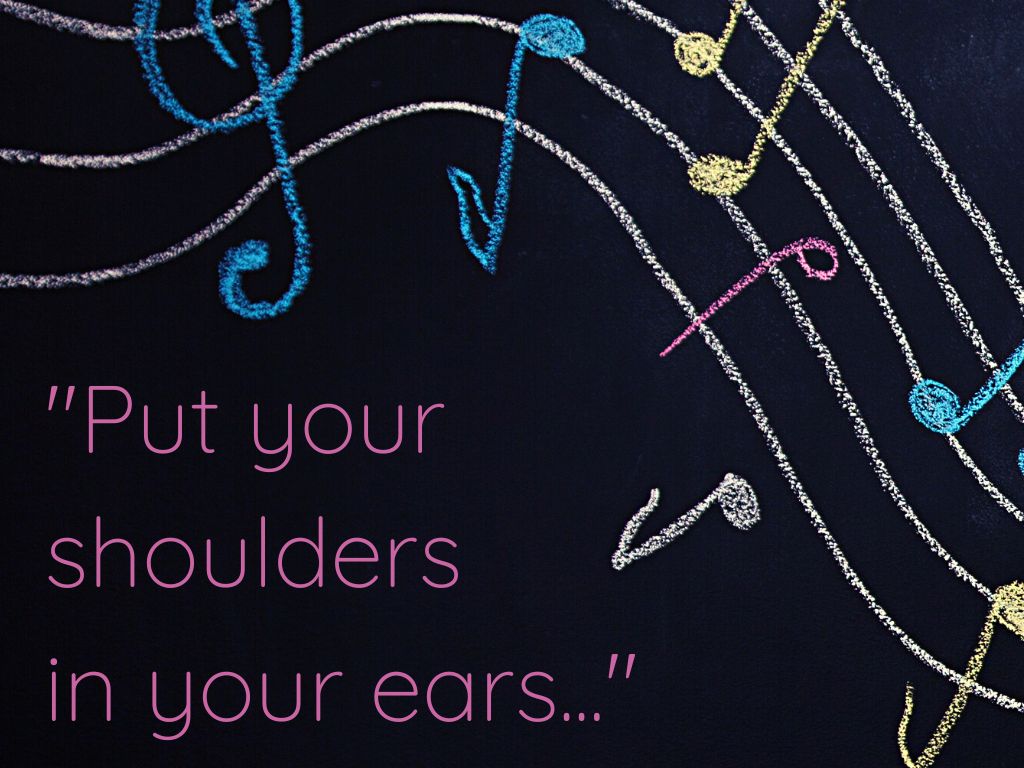



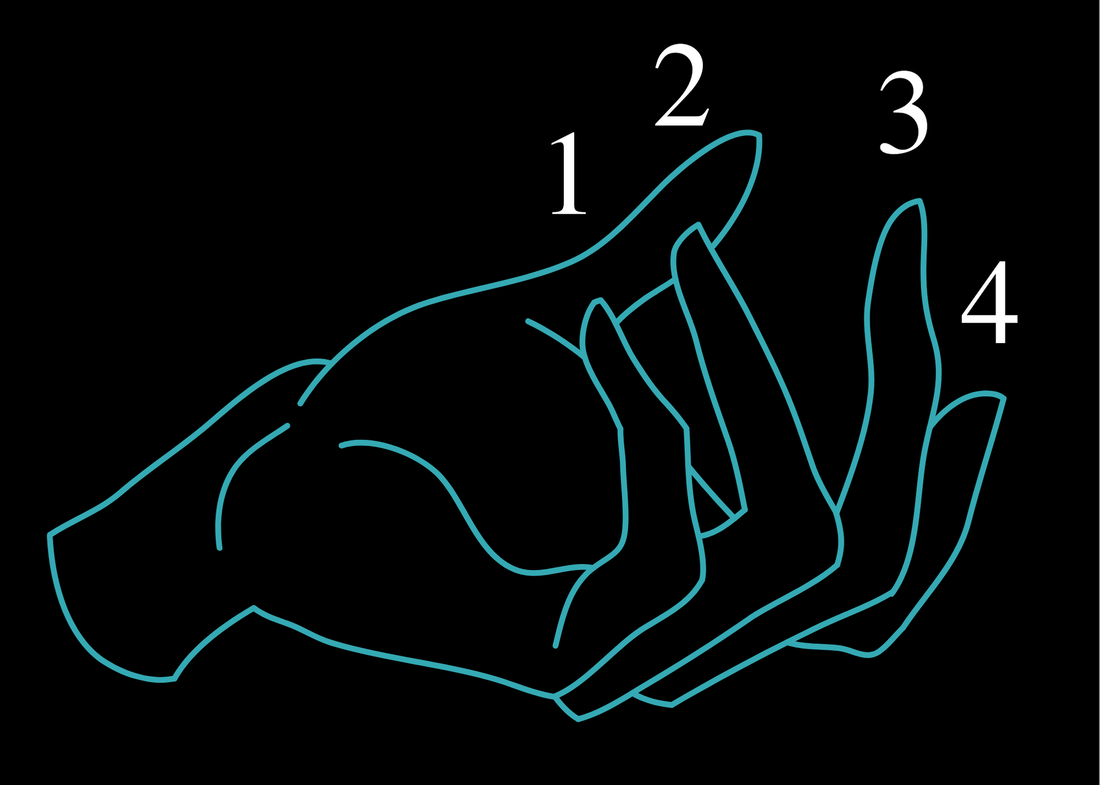









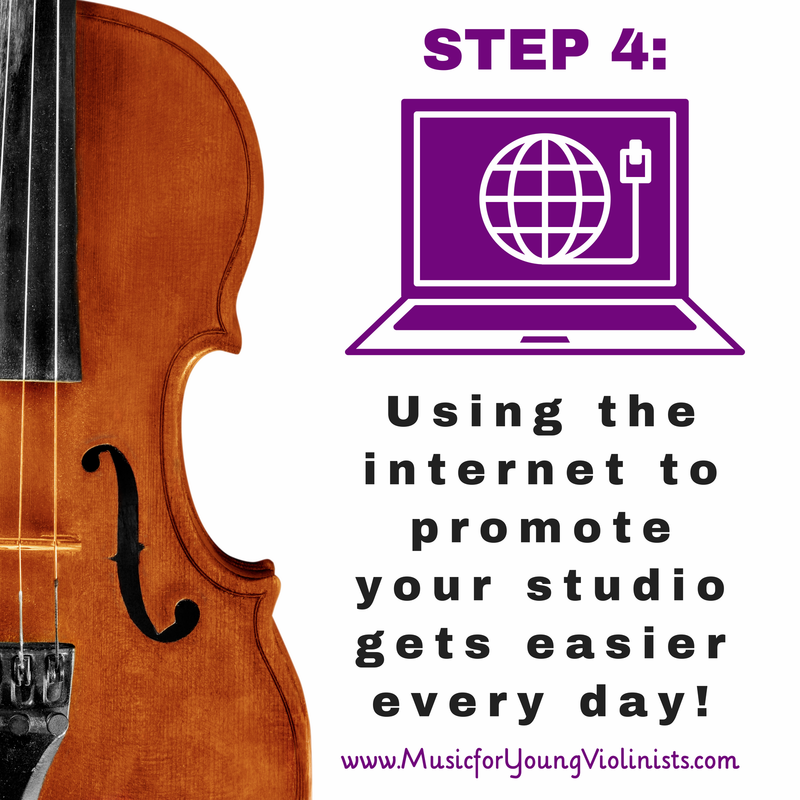


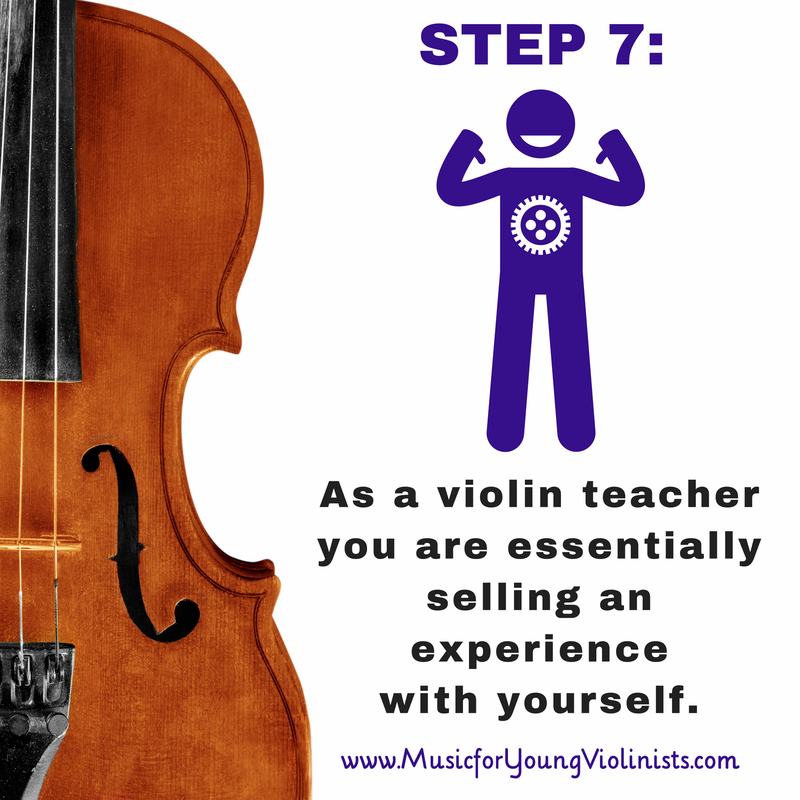
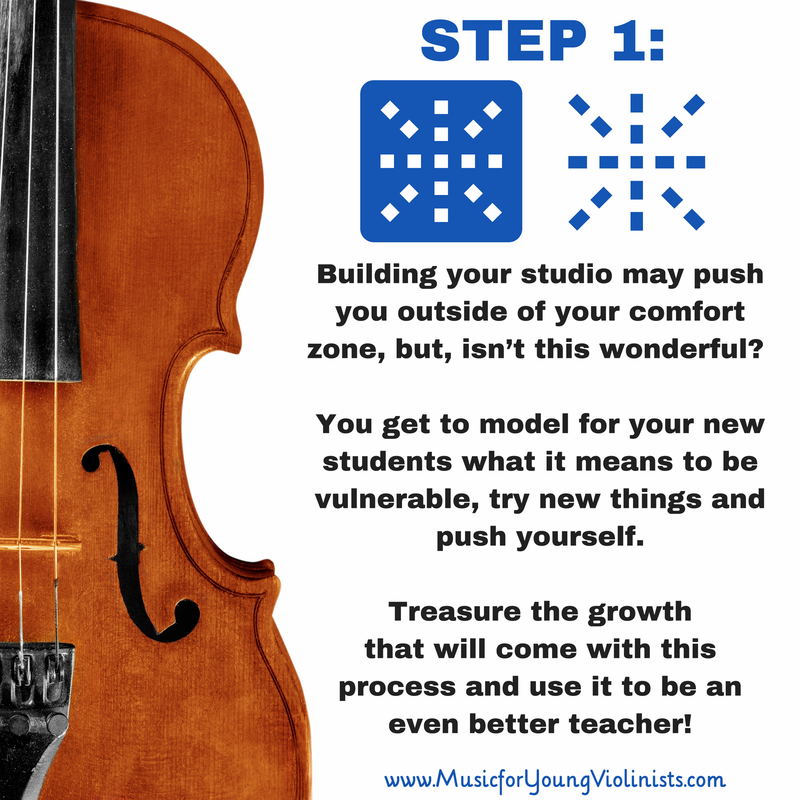





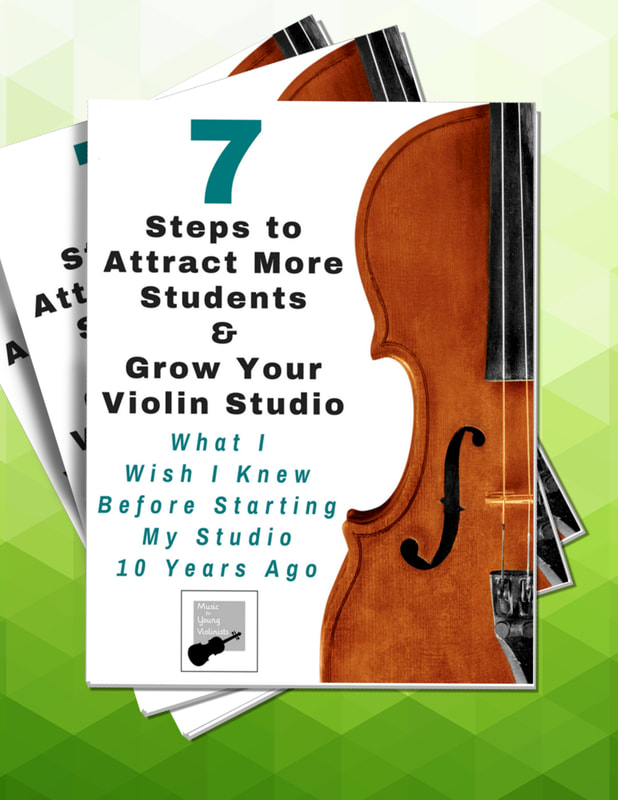









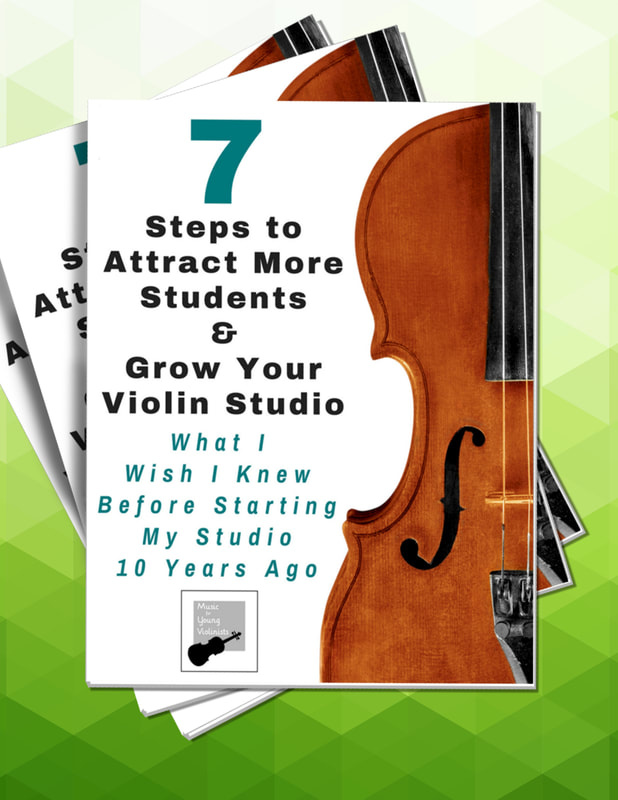







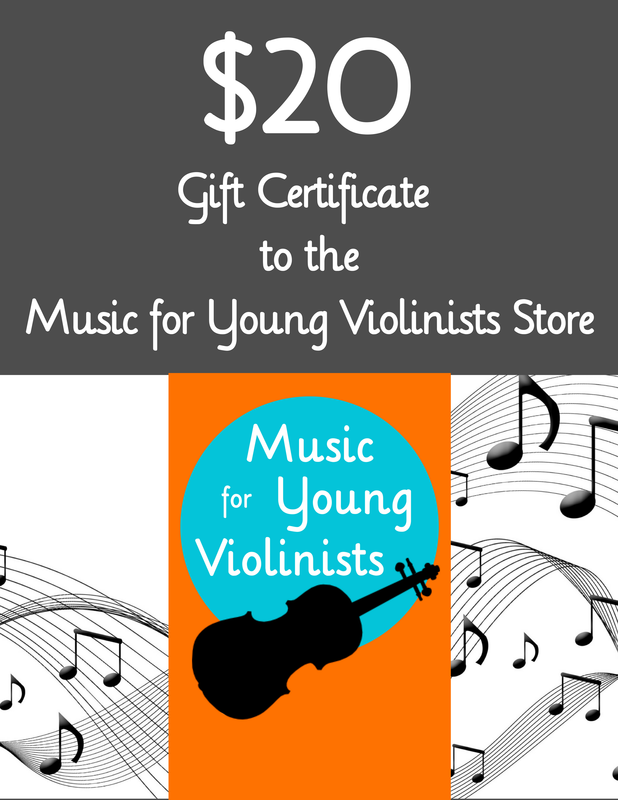
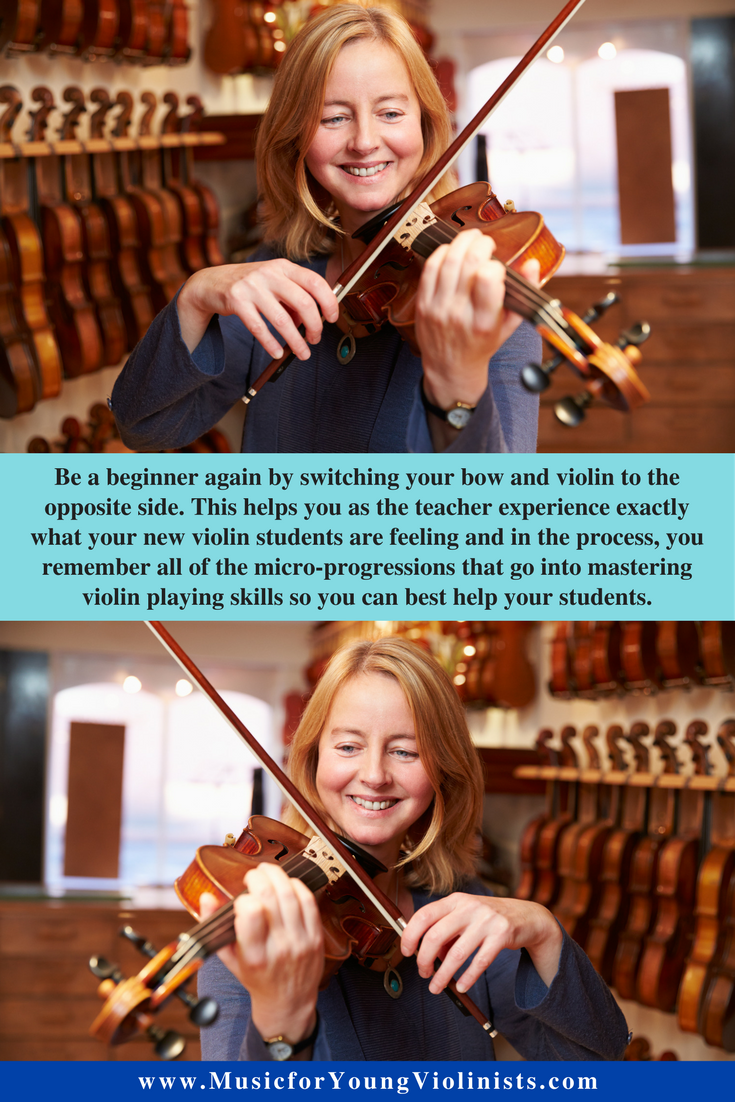
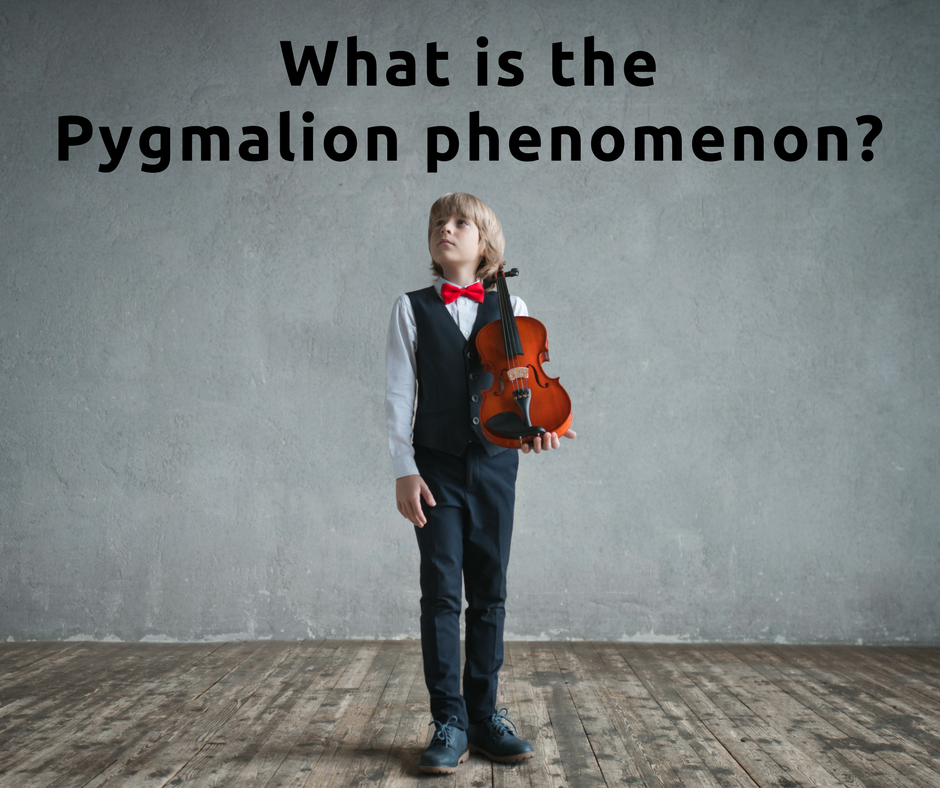





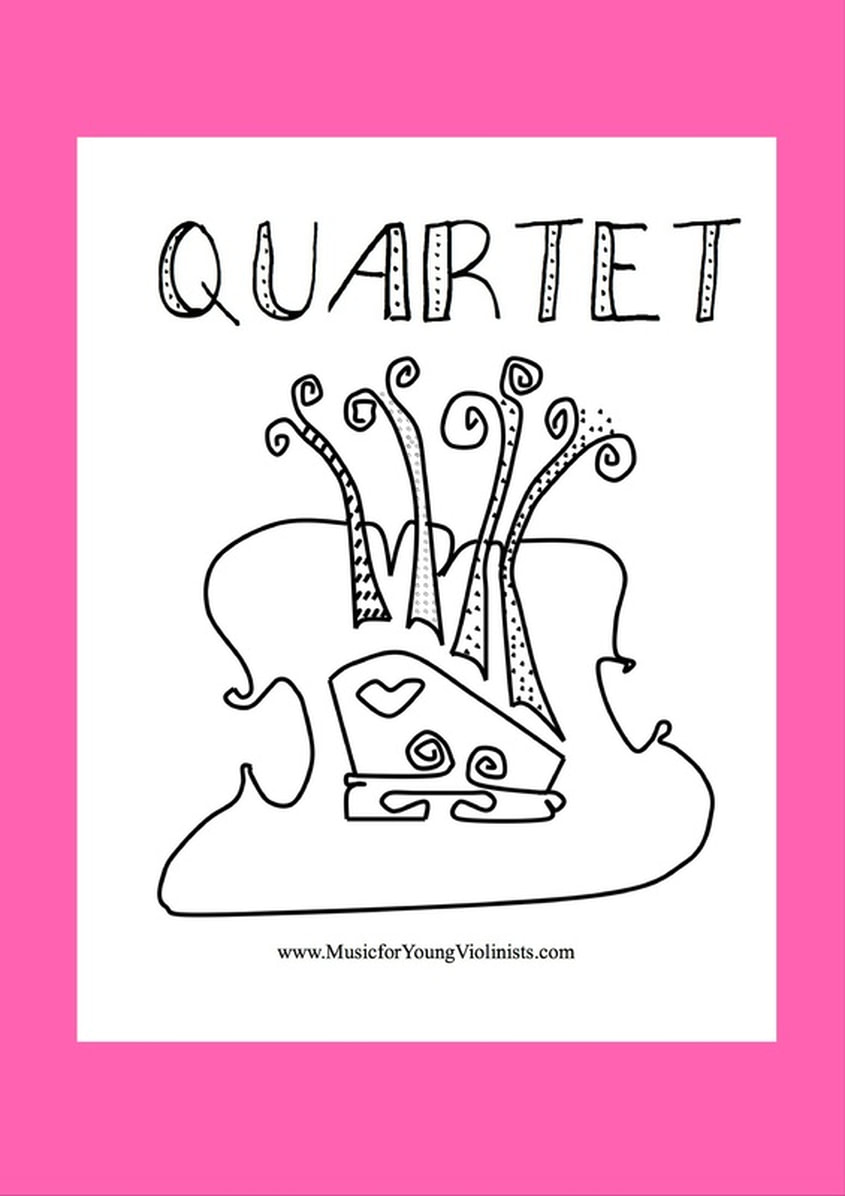



 RSS Feed
RSS Feed
